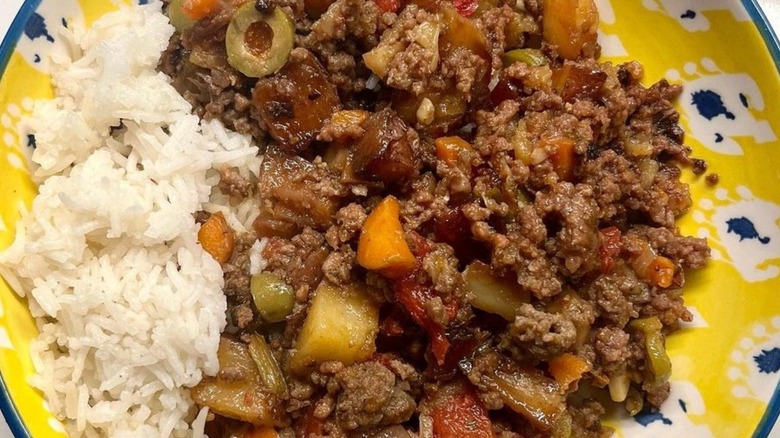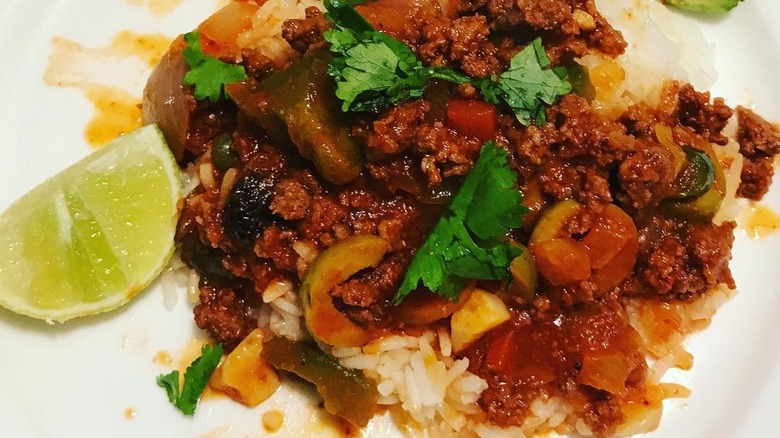Why No One Truly Knows Where Picadillo Originated
A 2014 article in The New York Times Magazine touted picadillo as Cuba's premier comfort food, but it should be noted that the island nation is not the only place where this beloved beef and tomato-based dish has deep roots. It has long been a staple of Mexican cuisine, dating all the way back to Mexico's independence from Spain in 1821, when picadillo was stuffed inside a poblano pepper for newly crowned emperor Agustín de Iturbide, reports The Washington Post.
Picadillo is popular in other Latin American countries, as well as in the Philippines, where according to Amigo Foods, it's often referred to as "arroz a la Cubana." The Philippine version of the picadillo name-checks the classic Cuban iteration and features a similar recipe. Despite this cross-cultural shoutout, however, the truth is that no one knows with certainty where picadillo actually originated, notes Chef Gourmet.
What we do know is that picadillo derives its name from the Spanish verb picar, which means "to chop," observes Chef Gourmet. That's appropriate given that finely ground, or minced beef, is a staple ingredient. But picadillo as it has evolved is an extremely versatile food item, with myriad location-specific variations. It shines as a stew or as a standalone and is easily integrated into other dishes, as it once was to create chiles en nogada.
Evidence for picadillo's likely Spanish origin
There's no definitive evidence that picadillo originated in Spain, according to Chef Gourmet, but the circumstantial evidence suggests this country as its likely birthplace. After all, one thing Latin American countries like Cuba and Mexico have in common with the Philippines is that all are former Spanish colonies. There's also the fact that a Spanish dictionary printed between 1726 and 1739 listed picadillo, noting the stew's signature chopped beef.
This dictionary entry predates Emperor Iturbide's picadillo-flavored pepper dish in Mexico by nearly a century, and it also predates the cookbook credited with spurring picadillo's modern popularity in Cuba. That would be "Cocina Criolla," the hugely influential Nitza Villapol penned collection published in 1954, The New York Times refers to Villapol as a sort of Cuban Julia Child. She helped to codify the country's now classic version that pairs a base of ground beef and tomatoes with green olives, potatoes, and raisins (via Food & Wine). Rice, it should be noted, is the perennial bedding over which this Cuban picadillo is served.
Cuba's picadillo may be the most famous today, but food historians believe Andalusia in Southern Spain is its probable ancestral home, per Chef Gourmet. However, Taste Atlas' description of traditional Andalusian picadillo soup — featuring hard-boiled eggs and ham — suggests little in common with modern conceptions of the dish. Endless variations and constant evolution in countries around the globe have taken picadillo far from its putative origins.

